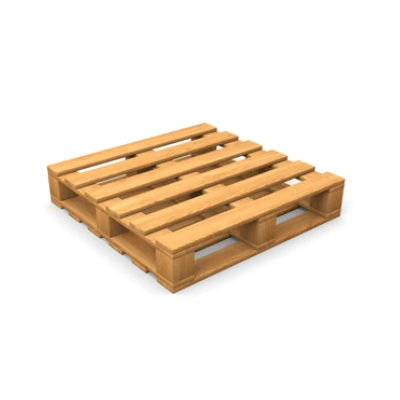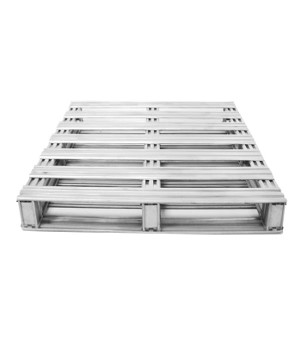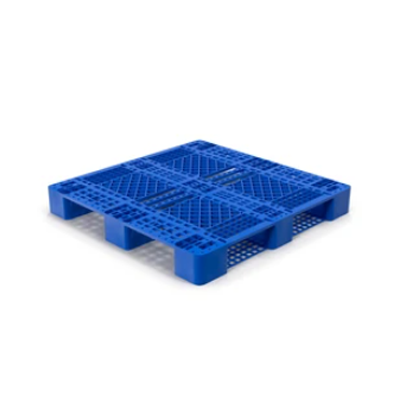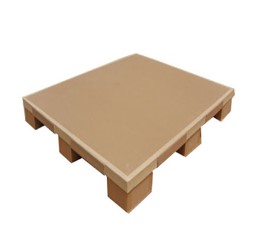
Easy and convenient, with low cost, most commonly used wooden pallets are made from rubber wood, which is strong and durable. However, using wooden pallets has limitations, such as the presence of mold in the wood, pests, insects, and splinters. These issues can cause damage to goods during export or if they do not reach the end customer in good condition. Currently, many countries, such as China, prohibit the use of wooden pallets for imports.
Steel pallets are designed to address some of the issues found in wooden and plastic pallets. To create a steel pallet, steel is cut to the same width and
length as wooden pallets, and then assembled. The process is similar to that of wooden pallets, but uses steel as the material instead.


Plastic pallets are currently the most popular choice due to their suitability for all industries. They do not have issues with mold, pests, insects, or splinters, unlike wooden pallets. However, producing plastic pallets involves higher costs and more complex manufacturing processes compared to wooden pallets.
Plastic pallets are currently the most popular choice due to their suitability for all industries. They do not have issues with mold, pests, insects, or splinters, unlike wooden pallets. However, producing plastic pallets involves higher costs and more complex manufacturing processes compared to wooden pallets.

A Warehouse Management System (WMS) is a software system designed to manage general warehouse operations, including receiving, storing, and distributing goods. The system consists of three main modules: Receiving, Storage, and Delivery.
The Receiving module involves the process of bringing goods or raw materials into the warehouse. This process includes labeling items with barcodes. It starts with inputting product information or retrieving data from the system for the items being received into the warehouse, and then printing barcodes to attach to the products.
Conveyors are essential systems used to transport goods from one point to another using a conveyor belt, similar to how major veins in the human body transport blood. Just as veins are crucial for blood circulation, an efficient conveyor system is vital for ensuring smooth operation in other processes. Properly selecting the right type of conveyor, such as AGV, RGV, Sorter, Roller, Belt, Chain, Spiral, or Vertical Elevator, ensures safe delivery of goods to their destination and extends the longevity of the conveyor system.